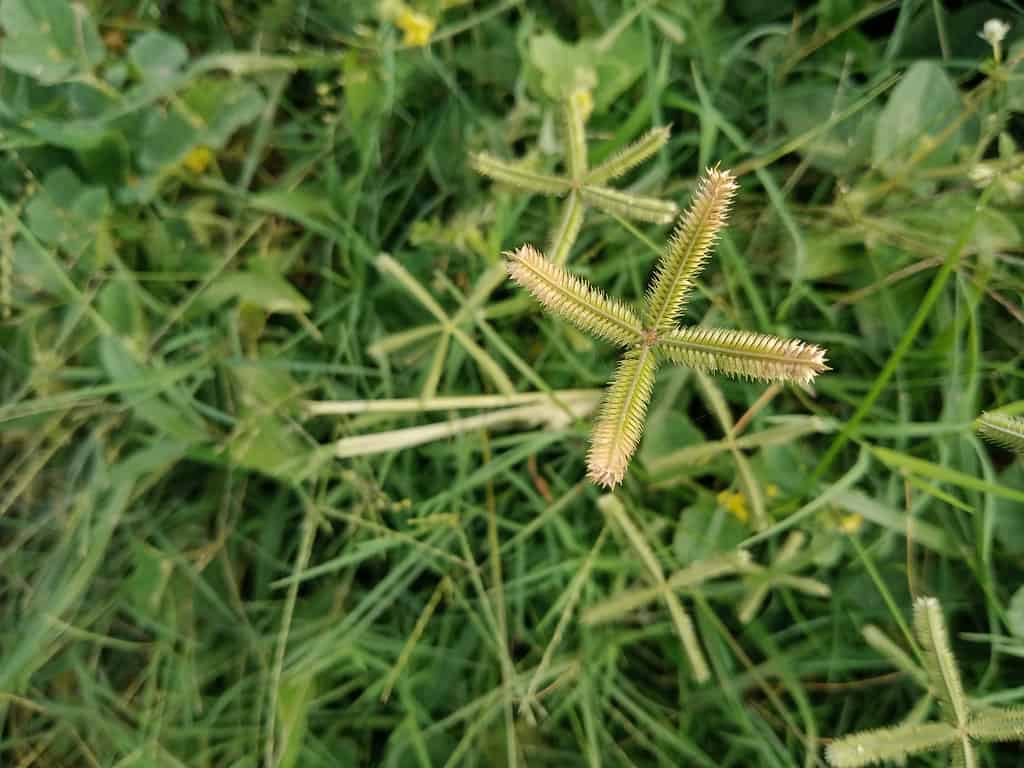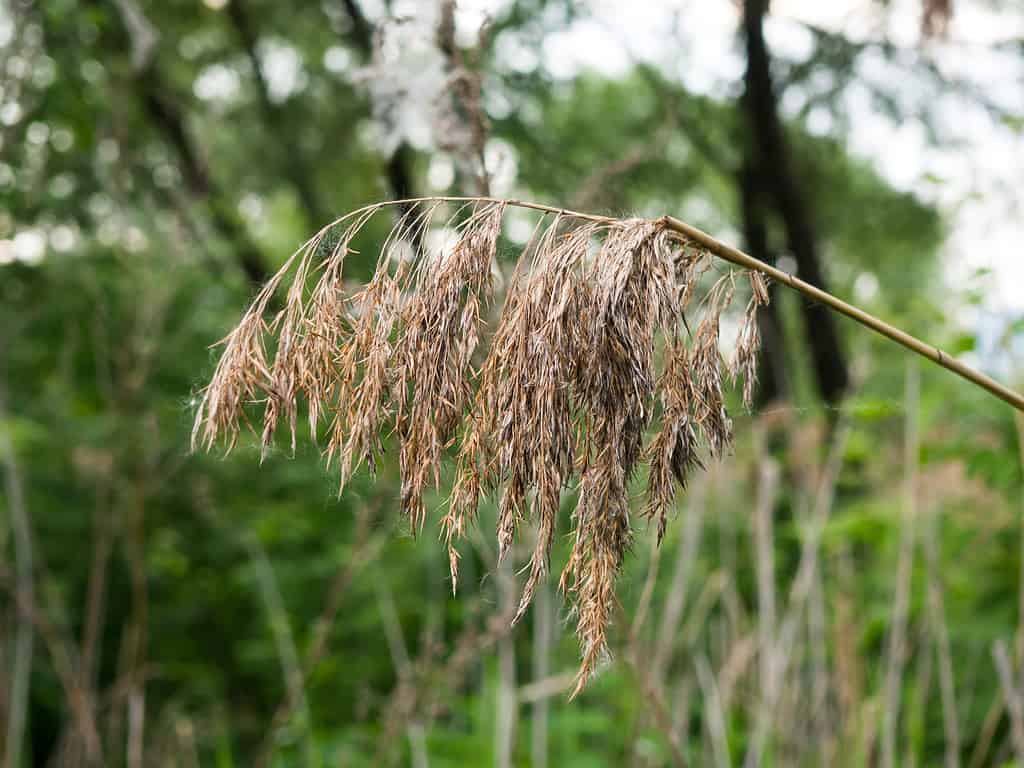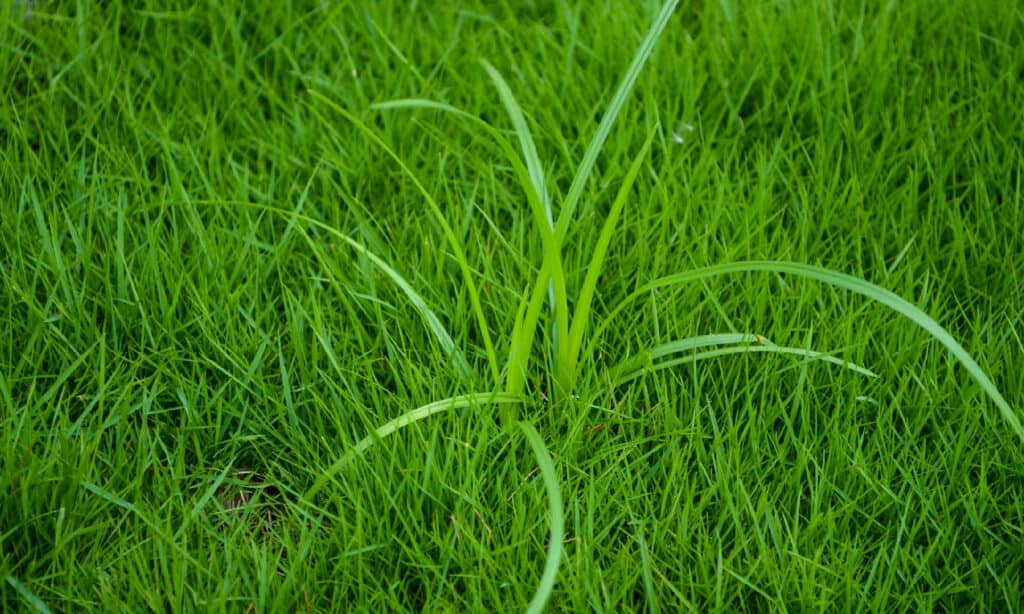
Ah, the sneaky and sly impostors of the lawn world! We all know them; we all dread them – those pesky weeds that try to pass themselves off as lush, green grass. It’s like they’re wearing a clever disguise, but don’t be fooled by their cunning tactics! These plants may think they can blend in with the crowd, but we’re onto their game. So let’s pull back the curtain and expose these weeds for the frauds they truly are! Keep reading to discover five common weeds that look like grass.

Turfgrasses are varieties of grass that are specifically cultivated for use in lawns and athletic fields
©SingjaiStocker/Shutterstock.com
What Is Grass?
Grasses are plants that belong to the Poaceae family and are characterized by their narrow leaves and hollow, jointed stems. They are found in a wide range of habitats, including prairies, savannas, wetlands, and also forests. Grasses are important sources of food and shelter for a variety of animals.
They are often used as turf for athletic fields, golf courses, and also lawns. Turfgrasses are varieties of grass that are specifically cultivated for use in lawns and athletic fields. Grasses are also grown as ornamental plants in gardens and landscapes. They are valued for their aesthetic appeal, durability, and ability to withstand foot traffic.
Grass Or Weed?
The difference between weed grasses and desirable lawn grasses is typically based on their characteristics and how they interact with their surrounding environment. Desirable lawn grasses are typically characterized by their fine texture, uniform growth habit, and also the ability to form dense, even turf. They are also generally non-invasive, meaning they do not spread aggressively or outcompete other plants in the area.
Weed grasses are typically characterized by their ability to grow quickly, and spread aggressively, smothering other plant species in the area. This is especially true of non-native varieties. Once introduced, these alien species may lack natural predators or competitors in their new environment. This allows them to grow unchecked and spread quickly. They may have a coarser texture, be prone to thatch buildup, or have a tendency to produce unsightly seedheads. Overall, these features make them undesirable for use in lawns and landscaping.

Non-native plants, like Egyptian crowfoot grass (
Dactyloctenium aegyptium), can outcompete native species and alter habitats.
©Usama Alli/Shutterstock.com
Crabgrass
Crabgrass (Digitaria sanguinalis) is a warm-season weed that is commonly found in lawns and gardens throughout the United States. It is an annual plant that thrives in warm, humid environments. It can spread rapidly, often overtaking large areas of turfgrass. One of the most distinctive features of crabgrass is its appearance. It has long, finger-like blades that can grow up to six inches (15.25 cm) tall and a distinctive, crab-like appearance. The blades are light green and grow in a rosette pattern, forming a dense, mat-like structure.
Crabgrass is considered a weed because it competes with desirable grass species for nutrients, water, and sunlight. It is particularly adept at surviving in areas of thin or damaged turf, where it can quickly establish itself and take over.

Crabgrass is considered a weed because it competes with desirable grass species for nutrients, water, and sunlight.
©iStock.com/Yesim Sahin
Quackgrass
Quackgrass (Elymus repens), also known as couchgrass or twitchgrass, is a perennial grass species that is considered a weed in many turfgrass and agricultural settings. It is a cool-season grass that can spread aggressively through underground stems called rhizomes, making it difficult to control once it becomes established.
Quackgrass can be identified by its coarse texture and also light green to bluish-green color. It typically grows in dense clumps and can quickly invade lawns, pastures, and other turfgrass areas. In addition, it often crowds out desirable grass species and creates an uneven and unkempt appearance.

Quackgrass is a perennial grass species that is considered a weed in many turfgrass and agricultural settings.
©Partsey Galyna/Shutterstock.com
Johnsongrass
Johnsongrass (Sorghum halepense) is a perennial grass species that is native to the Mediterranean. It has become widespread in many countries, including the United States, where it is a major problem in agricultural fields, pastures, and other areas. Johnsongrass can be identified by its tall stature and coarse texture. It produces large seedheads that appear in late summer. It spreads rapidly through underground stems called rhizomes, which can quickly form dense stands and outcompete desirable plant species. Under certain conditions, Johnsongrass also produces cyanide. Cyanide is a toxic compound that can be harmful to livestock when it’s ingested in large quantities.

Johnsongrass produces large seedheads that appear in late summer.
©Evgeniy Eivo/Shutterstock.com
Nutsedge
Nutsedge (Cyperus rotundus), also known as nutgrass, is a perennial weed that is often considered a nuisance in lawns, gardens, and other landscaping settings. It is characterized by its triangular stem, narrow leaves, and distinctive seedheads. Nutsedge is a highly adaptable plant that can thrive in a variety of soil types and moisture levels. It spreads rapidly through underground tubers, which can quickly form dense colonies that crowd out desirable plant species. Nutsedge is also known for its ability to tolerate a wide range of environmental conditions, including heat, drought, and flooding.

Nutsedge is a highly adaptable plant that can thrive in a variety of soil types and moisture levels.
©iStock.com/Bhupinder Bagga
Goosegrass
Goosegrass (Eleusine indica), also known as silver crabgrass or wiregrass, is an annual weed that is commonly found in lawns, gardens, and other landscaping settings. It is characterized by its shiny, silver-green leaves and distinctive seedheads that resemble a bird’s foot.
Goosegrass is a highly adaptable plant that can thrive in a variety of soil types and moisture levels. It spreads rapidly through seed and can quickly form dense colonies that crowd out desirable plant species. Goosegrass is also known for its ability to tolerate heat, drought, and other environmental stresses.

Goosegrass is characterized by its shiny, silver-green leaves and distinctive seedheads that resemble a bird’s foot.
©Mang Kelin/Shutterstock.com
Summary Of Five Common Weeds That Look Like Grass
| Rank | Common Weed |
|---|---|
| 1 | Crabgrass |
| 2 | Quackgrass |
| 3 | Johnsongrass |
| 4 | Nutsedge |
| 5 | Goosegrass |
The photo featured at the top of this post is © Mamamstock/Shutterstock.com
Thank you for reading! Have some feedback for us? Contact the AZ Animals editorial team.






